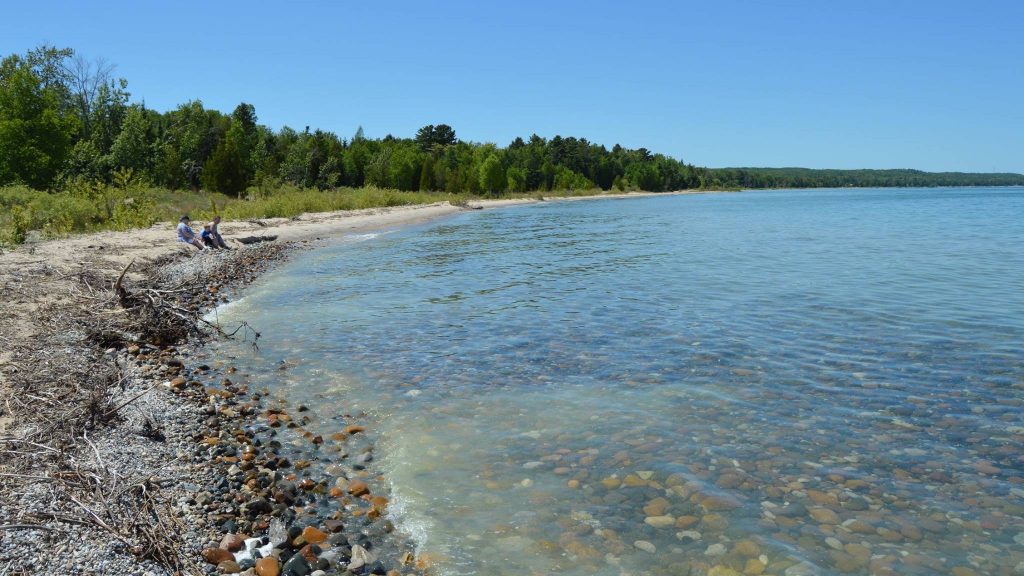Officials urge safety while swimming the Great Lakes after Mackinac Island drowning
Michael Livingston June 17, 2024The Great Lakes have cold water and hidden currents that can make them hard to navigate even for strong swimmers, officials say.

The Lake Huron shoreline.
Rescue officials are stressing the importance of water safety after a 22-year-old woman fell off her paddle board in Lake Huron near Mackinac Island last week and drowned.
The Great Lakes have cold water and hidden currents that can make them hard to navigate even for strong swimmers, say officials with Mackinac Marine Rescue, a volunteer team on the island.
Hypothermia can set in quickly, faster than one would expect on a warm day.
Water temperatures around Mackinac Island, for example, can range from 30 degrees in early May to above 60 degrees in late August at the surface.
But deeper water is 45 degrees year-round and those temperatures can surface anytime.
“Given these averages, on a calm, sunny, non-windy day you would expect to be in the water for 10-15 minutes before you start to lose some of your mobility. Add wind, waves and cooler air temperatures and your time drops quickly,” said the Mackinac Marine Rescue and Mackinac Island Recreation Department in a joint statement.
Those conditions are common in the Great Lakes region.
According to the National Weather Service, if caught in a dangerous current, flip on your back, float, and follow the current or the safest path out of the water. Swim along the shore until able to swim toward the beach.
The Great Lakes Surf Rescue Project is a nonprofit aimed at public education about staying safe in the water. Dave Benjamin is executive director of public relations and project management.
He said swimming with a partner, or telling someone where you’ll be and for how long you’ll be in the water, greatly increases safety.
“A real simple way to do that is just call home and leave a message for someone,” Benjamin said. “A life jacket, a leash, dressing for the water temperature are all good things when paddle boarding or kayaking.”
Since 2011, the GLSRP has performed over 900 Great Lakes Water Safety presentations in seven of the eight Great Lakes states. It also keeps data on Great Lakes drownings.
While the total number of deaths decreased from 108 in 2022 to 85 in 2023, there have been 22 drownings so far in 2024.
Since 2010, more than 1,200 people have drowned in Great Lakes waters.
Trusted, accurate, up-to-date.
WDET strives to make our journalism accessible to everyone. As a public media institution, we maintain our journalistic integrity through independent support from readers like you. If you value WDET as your source of news, music and conversation, please make a gift today.
